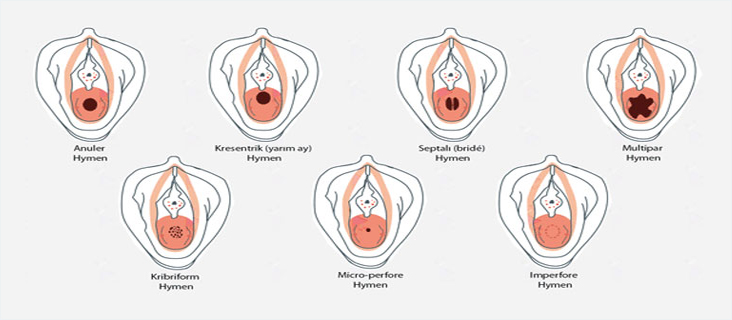Hymenoplasty, or hymen restoration surgery, is a procedure that helps restore a woman’s virginity. It repairs the hymen, a membrane found just inside the vagina. While there is no known function for this piece of skin, many experts believe it helps protect against infections caused by external agents.
Hymenoplasty surgery can help women avoid the shame of losing their virginity before marriage. This shame can lead to low self-esteem or even depression for some.
What Is Hymenoplasty Surgery?
Hymen repair surgery and hymen surgery are common terms used to describe hymenoplasty, a surgical procedure to restore the hymen. The hymen is a thin membrane that partially covers the vaginal opening. It can be torn or stretched due to various reasons, including sexual intercourse, strenuous physical activity, or medical procedures.
Hymenoplasty aims to recreate the appearance of an intact hymen, often for cultural or personal reasons. The surgery involves stitching the remaining hymenal tissue together or using other surgical techniques to reconstruct the hymen.
Some people use the term virginity surgery to refer to hymenoplasty, but this is misleading. Hymenoplasty does not restore virginity, as virginity is a social and cultural concept, not solely a physical state.
Hymen repair can refer to either surgical or non-surgical methods. Non-surgical hymen repair typically involves using a substance that temporarily creates the appearance of an intact hymen. However, these methods are not permanent and may not be suitable for everyone.
If you are thinking about hymenoplasty or any hymen repair, it is important to talk to a skilled surgeon. At Cayra, We can explain your options, answer your questions, and give you a clear idea of what to expect. You can get your free consultation now.
What Are The Various Procedures To Perform Hymenoplasty Surgery?
First, you must schedule a consultation with the doctor to discuss the hymenoplasty surgery procedure and clarify your expectations. The doctor will give you insight into the surgery and instructions on preparing for hymenoplasty. The techniques include:
- The basic technique: If the hymen remains, they can be stitched together. Local or sometimes general anesthesia will be administered to prevent pain and discomfort. Your surgeon at Cura Clinic will then sew the torn parts together; the stitches are dissolvable. The entire hymenoplasty surgery takes up to 40 minutes and is usually performed outpatient.
- The all-plant technique is followed when the remnants cannot be stitched together. Your surgeon will place a biomaterial into the vagina. This material will act like the hymen. This hymenoplasty surgery procedure takes around two hours, and you will be under local anesthesia.
- Hymen Reconstruction: In this hymenoplasty surgery, your surgeon will make a new hymen. They will use tissues from the lip of the vagina. However, this method will require you to abstain from sexual intercourse for a minimum of three months.
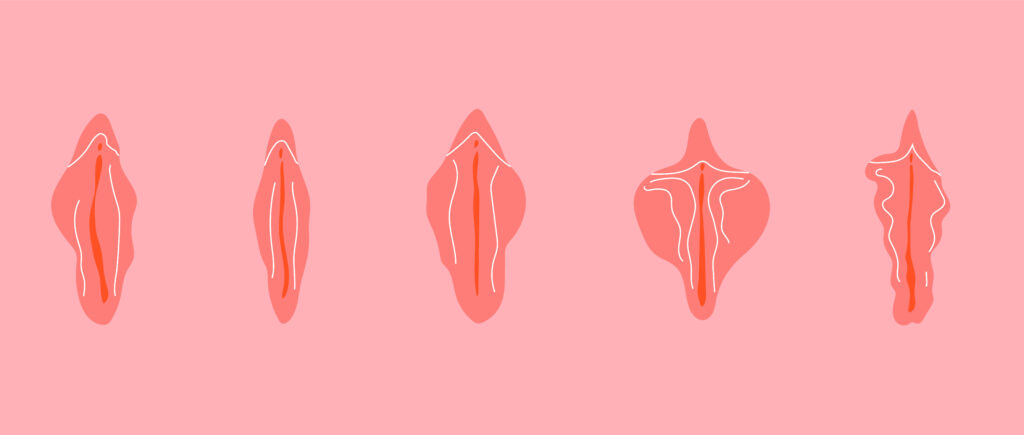
Who Needs Hymenoplasty Surgery?
Usually, women seek virginity operations for cultural and religious reasons. In most cases, the person would have lost her virginity in intercourse and wants to restore it before her marriage. In some cases, a girl may lose her hymen from non-sexual activities. However, due to religious or social norms, they feel it is important to repair the hymen. A gynecological exam is also necessary to determine if your hymen can be restored or not.
The suitable candidates for hymenoplasty surgery are:
- Those who have ruptured their hymen due to sex or other activities
- Women who are healthy and don’t suffer from any serious illnesses
Who Is Not Eligible For The Hymenoplasty Surgery Treatment?
While hymenoplasty can be an option for some women, certain individuals may not be suitable candidates for the procedure. Here are some general criteria that might make someone ineligible for hymenoplasty:
- Active infection: Any active infection in the vaginal area needs to be treated and resolved before considering hymenoplasty.
- Pregnancy: Hymenoplasty is not recommended during pregnancy.
- Certain medical conditions: Some medical conditions, such as bleeding disorders or uncontrolled diabetes, may increase the risks associated with surgery and make someone ineligible.
- Unrealistic expectations: It’s crucial to have realistic expectations about the outcome of hymenoplasty. The procedure aims to make the hymen look normal again. However, it does not change a person’s sexual history or virginity status.
- Mental health concerns: People with certain mental health conditions may need extra evaluation. This helps ensure they can make informed decisions about the procedure and handle any emotional effects.
It’s important to consult with a qualified and experienced surgeon to determine your eligibility for hymenoplasty.
When Should Hymen Repair Surgery Be Done?
This depends on the type of surgery to be performed and the duration of the marriage. Permanent hymenoplasty surgery can be done at any time. They do not depend on how long a couple has been married. Temporary hymen repair operations should be done 1-6 days before the marriage. The chance of success in both operations is proportional to the surgeon’s experience. It is the key to success that an experienced gynecologist performs permanent hymen repair at Cayra Clinic. Ensuring patient confidentiality, privacy, and ethical values is also extremely important.
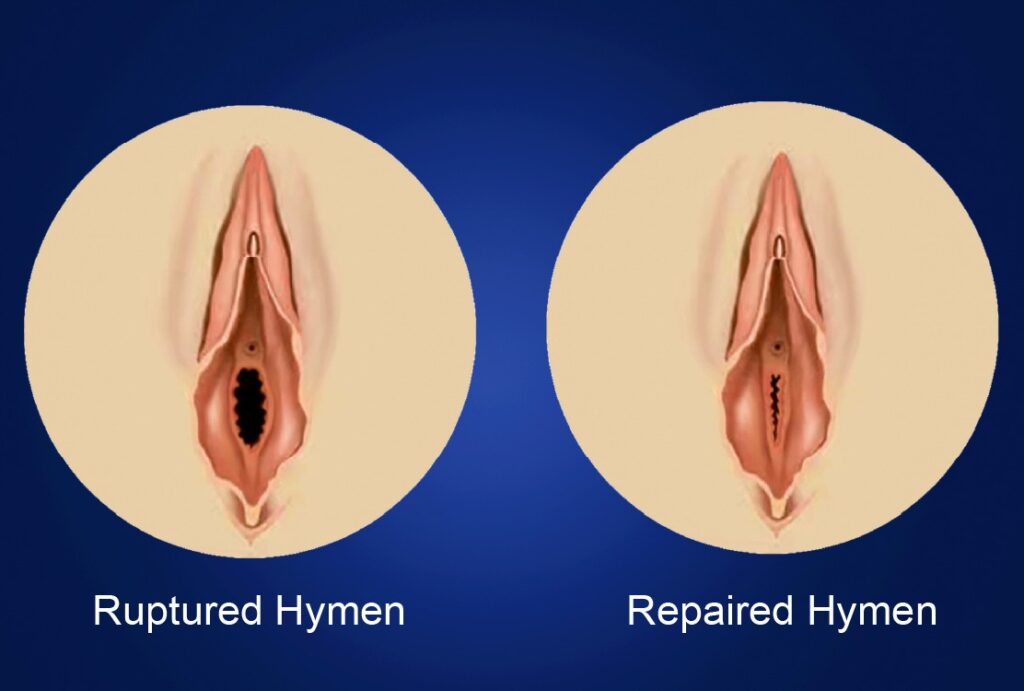
What Are The Benefits Of Hymenoplasty Surgery?
There are numerous benefits of undergoing virginity operation. Some of these include:
- Restores the hymen to bleed during intercourse.
- Repairs damaged hymen caused due to an accident or assault.
- Rejuvenates the hymen, making the female a virgin again.
- After leaving the hospital, you can return to daily life because of the simplicity of the procedure.
- Simple and risk-free process.
- The hymen is sutured painlessly.
- Since self-dissolving stitches are used, removing the stitches is unnecessary afterward.
- Unless intercourse is tried again, the results are lifelong.
Reasons for Hymenoplasty: Cultural and Personal Motivations
Hymenoplasty, also known as “hymen repair” or “hymen restoration,” is often sought for a combination of cultural and personal reasons. In many cultures, an intact hymen is associated with virginity and considered a symbol of purity and honor. For women who have experienced hymenal tearing due to various reasons, hymenoplasty can offer a way to restore their sense of wholeness and cultural acceptance.
Cultural Significance:
- Virginity Restoration: In some cultures, “virginity restoration” is considered essential for social acceptance, especially for women facing marriage or other cultural expectations. Hymenoplasty can provide a way to meet these cultural norms and avoid social stigma or ostracism.
- Family Pressure: In certain communities, family pressure and expectations regarding virginity can be significant. Women may feel compelled to undergo hymenoplasty to maintain family honor and avoid conflict or rejection.
Personal Motivations:
- Psychological Well-being: For some women, hymenoplasty is a personal choice to address emotional or psychological distress caused by hymenal tearing. It can help restore a sense of self-esteem and confidence.
- Relationship Concerns: Some women may seek hymenoplasty to address concerns within their relationships, particularly if their partner has expectations regarding virginity.
- Reclaiming Bodily Autonomy: Hymenoplasty can be a way for women to reclaim control over their bodies and make choices that align with their personal values and beliefs.
Important Considerations:
- Informed Decision: It’s crucial to make an informed decision about hymenoplasty, considering both the cultural and personal implications.
- Ethical Concerns: There are ethical considerations surrounding hymenoplasty, particularly regarding the perpetuation of cultural norms that may be harmful or discriminatory towards women.
- Alternative Perspectives: It’s important to acknowledge that virginity is a complex concept and that hymenoplasty does not change a person’s sexual history or experiences.
Complications Of Hymenoplasty
If you have your hymen restoration performed, you will have flawless results. However, Some of the potential but correctable side effects of hymenoplasty surgery include:
- Post-op swelling, pain, and bruising
- Hematomas and bleeding
- Discoloration of the hymen
- Numbness
These side effects are minor. Our medical team will take steps to avoid problems and reduce discomfort.
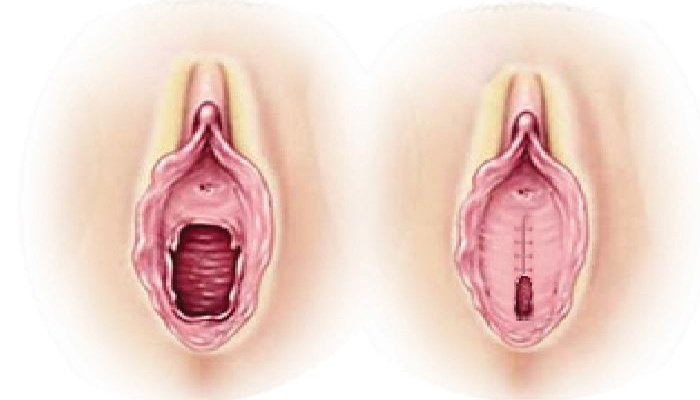
Preparing for Hymenoplasty: What to Expect Before Surgery
Hymen repair procedure, like any surgery, requires careful preparation to ensure a safe and successful outcome. Here’s a general overview of the process before:
Consultation:
- Medical history: Your surgeon will ask about your medical history. This helps them understand your health and find any risks.
- Physical examination: A physical exam will be performed to evaluate the condition of your hymen and surrounding tissues.
- Discussion of Expectations: You will talk clearly and honestly with your surgeon. You will discuss what you expect from the procedure and what results are possible.
- Questions and Concerns: Now is the time to ask any questions you have. You can also share any worries about the surgery, recovery, or possible risks.
Pre-operative instructions:
- Medical tests: Your surgeon may order blood tests or other medical evaluations to ensure you’re fit for surgery.
- Medication adjustments: Before the surgery, you may need to adjust or stop certain medications, such as blood thinners.
- Lifestyle changes: Your surgeon may suggest that you make some lifestyle changes. This could include quitting smoking or avoiding alcohol. These changes can help you heal and lower risks.
- Hygiene: You’ll receive instructions on hygiene practices to follow before the surgery to minimize the risk of infection.
Preparing for the day of surgery:
- Fasting: You’ll be instructed to fast for a certain period before the surgery, typically starting the night before.
- Clothing: Wear comfortable, loose-fitting clothing that’s easy to put on and remove after surgery.
- Transportation: Arrange for someone to drive you home after the procedure, as you may be unable to drive yourself.
Emotional preparation:
- Mental readiness: Hymenoplasty can be a personal and emotionally sensitive procedure. It’s essential to be mentally prepared for the surgery and the potential implications it may have for you.
- Support system: Having a supportive network of friends or family can help you through the process and recovery.
Understanding the Hymenoplasty Procedure: What Happens During Surgery
Virginity restoration is usually a simple procedure. However, having questions about what to expect during the surgery is normal. Here’s a general overview of the process:
Anesthesia:
Local or General Anesthesia:
You will receive one of two types of anesthesia.
Local anesthesia numbs a specific area.
General anesthesia makes you sleep during the procedure. This choice depends on how complex the procedure is and your preferences.
Surgical Technique:
- Hymenal remnants: If there are enough pieces of the hymen, the surgeon will carefully stitch them together. This helps recreate the look of an intact hymen.
- Tissue Grafting: If not much hymenal tissue is left, the surgeon might take a small piece of tissue from another area. This could be from the vaginal lining to help rebuild the hymen.
Procedure Duration:
- Typically short: Hymenoplasty is a relatively short procedure, often taking less than an hour to complete. However, the exact duration can vary depending on the case’s complexity.
Incisions and Sutures:
- Minimal incisions: The incisions made during hymenoplasty are typically small and discreet, designed to minimize scarring.
- Dissolvable sutures: Most surgeons use them, so you won’t need them removed later.
Care After Hymenoplasty
What to Expect After Hymenoplasty: Your Guide to Recovery and Aftercare
Understanding the recovery process after hymenoplasty is essential for a smooth and successful experience. Here’s what you can expect after hymenoplasty surgery:
Initial Healing:
- Rest: In the first few days after surgery, it’s crucial to rest and avoid strenuous activities. This allows your body to focus on healing.
- Discomfort: You may experience mild discomfort, swelling, or bruising. Your surgeon will provide pain medication and instructions on managing these symptoms.
- Hygiene: Maintaining good hygiene is crucial to prevent infection. You’ll receive specific instructions on how to clean the area and care for the surgical site.
- Activity restrictions: Your surgeon will advise you on when it’s safe to resume normal activities, including sexual intercourse.
Long-Term Expectations:
- Hymen after hymenoplasty: The procedure aims to recreate the appearance of an intact hymen. However, it’s important to understand that the hymen may not look as they did before.
- Sexual activity: Your surgeon will provide guidance on when it’s safe to resume sexual activity. It’s important to communicate openly with your partner about the procedure and any concerns you may have.
Our Aftercare Services:
Our clinic provides comprehensive aftercare services to support you throughout your recovery journey. This includes:
- Follow-up appointments: We’ll schedule regular check-ups to monitor your healing progress and address concerns.
- 24/7 support: Our team is available 24/7 to answer your questions and provide assistance if needed.
- Personalized guidance: We’ll provide customized advice and instructions tailored to your needs and recovery progress.
Tips for a Smooth Recovery:
- Follow post-operative instructions carefully.
- Maintain good hygiene.
- Avoid strenuous activities and heavy lifting.
- Eat a healthy diet and stay hydrated.
- Communicate openly with your surgeon and care team.
Non-Surgical Hymenoplasty: A Temporary Solution for Hymen Restoration
While traditional hymenoplasty involves surgery, there are also non-surgical options available. Hymen repair without surgery offers a temporary solution for women seeking to restore their hymen. This method typically involves using a substance that mimics the appearance and feel of an intact hymen.
How it Works:
- Artificial hymen: A dissolvable material, similar to natural tissue, is placed in the vaginal opening. This creates a temporary membrane that simulates an intact hymen.
- Natural appearance: The material looks and feels like a natural hymen. It offers a temporary solution for women who want to restore their hymen for personal or cultural reasons.
Advantages of Non-Surgical Hymenoplasty:
- No surgery: The procedure is non-invasive, avoiding the risks and downtime associated with surgery.
- Quick and easy: It’s a relatively fast and simple procedure that can be performed in a clinical setting.
- Temporary solution: It offers a temporary solution for women who may not be ready for or eligible for surgical hymenoplasty.
Limitations:
- Temporary results: The results are not permanent and typically last for a few days or until sexual intercourse.
Not for everyone:
This may not be suitable for women with certain medical conditions.
It is also not for those looking for a permanent solution.
Hymenoplasty at a Glance: Comparing Permanent and Temporary Options
| Feature | Permanent Hymenoplasty | Temporary Hymenoplasty |
|---|---|---|
| Hospitalization | No need, discharge on the same day | No need, discharge on the same day |
| Operation Duration | 30 minutes | 10-30 minutes |
| Return to Work/Social Life | Immediately | Immediately |
| Anesthesia | General or Spinal | Local, General, or Spinal |
| Full Recovery Period | 4 weeks | Not applicable |
| Convalescence Period | 0-1 day | Not applicable |
| Permanence of Results | Permanent | Temporary |
| When to have it done? | – | Ideally 2-10 days before anticipated sexual intercourse |
Hymenoplasty Cost
When considering hymenoplasty, one of the most common questions is, “What is the hymenoplasty cost?” The truth is, there’s no one-size-fits-all answer. The cost can vary significantly based on several factors, including the type of procedure, the surgeon’s expertise, and the location of the clinic.
Hymenoplasty costs will differ depending on whether you opt for a surgical or non-surgical approach. Surgical hymenoplasty, which involves reconstructing the hymen, typically comes with a higher hymenoplasty price than the non-surgical option, which uses a temporary artificial hymen.
The surgeon’s experience and reputation also play a role. A highly skilled hymenoplasty surgeon may charge more due to their specialized knowledge. Similarly, the location can influence the cost. For instance, if you’re looking at hymenoplasty cost near me in a major city like London, it might be higher than in a smaller town. The hymenoplasty cost can also vary significantly between countries.
To give you a general idea, here’s a rough estimate of hymenoplasty costs in different locations (remember that these are just averages, and the actual price can vary):
- Turkey: Hymenoplasty cost in Turkey can range from approximately €500 to €2,000.
- USA: In the United States, you might expect to pay between €1,500 and €5,000 or more.
- UK: Hymenoplasty prices in the UK could fall somewhere between €1,000 and €3,000.
- India: In India, the cost might be lower, ranging from €300 to €1,000.
Discussing the cost and payment options with your surgeon during your consultation is crucial. They can provide a clear breakdown of the hymenoplasty price and explain the different factors that contribute to the total cost. Don’t hesitate to ask for a personalized quote and explore different options that may affect the overall expense.
Factors Influencing Hymenoplasty Success
Hymenoplasty success depends on several factors, including the surgical technique used, the surgeon’s expertise, and individual healing. The chosen method, whether it’s hymen repair or hymen reconstruction, influences the complexity of the procedure and the potential outcomes.
The surgeon’s skill and experience in performing hymenoplasty are crucial for achieving optimal results. A skilled surgeon can ensure proper tissue handling, minimize scarring, and create a natural-looking hymen.
Individual healing also plays a significant role in hymenoplasty success. Factors like age, health, and following post-surgery care can impact how well the tissues heal. They also affect the final look of the hymen.
While hymenoplasty aims to restore the hymen, it’s important to have realistic expectations. The procedure cannot guarantee that the hymen will look or feel exactly as it did before. A successful hymenoplasty can make it look like the hymen is intact. This may matter for cultural or personal reasons.
Choosing a skilled and experienced surgeon is important. Following post-operative care instructions is also key. Open communication with your medical team can help ensure a successful hymenoplasty outcome.
Hymenoplasty in Turkey: A Guide to Restoring Virginity
Hymenoplasty, sometimes referred to as “hymen repair surgery” or “virginity surgery,” is a procedure that restores the hymen, a thin membrane that partially covers the vaginal opening. In Turkey, hymenoplasty is a widely performed procedure, often chosen for cultural or personal reasons.
Why Turkey?
Turkey has become a popular destination for hymenoplasty due to several factors:
- Experienced Surgeons: Turkey boasts many skilled and experienced surgeons specializing in hymenoplasty and other gynecological procedures.
- Affordable Prices: The cost of “hymen surgery” in Turkey is usually lower than in many Western countries. This makes it a good choice for people looking for quality care at a better price.
- Modern Facilities: Many clinics and hospitals in Turkey have advanced technology and facilities. This ensures a high standard of care.
- Tourism Opportunities: Combining hymenoplasty with a vacation in Turkey allows patients to experience the country’s rich culture and history while undergoing treatment.
Hymenoplasty Options in Turkey:
- Traditional Hymenoplasty involves surgically reconstructing the hymen using stitches or tissue grafts.
- “Artificial Hymen Surgery”: This technique uses a temporary membrane to create the appearance of an intact hymen.
Choosing a Clinic in Turkey:
When considering hymenoplasty in Turkey, choosing a reputable clinic with experienced surgeons and a proven track record is crucial. Cayra Clinic is committed to providing high-quality care and personalized attention. We offer hymenoplasty services in three convenient locations: Istanbul, our bustling metropolis; Antalya, renowned for its stunning coastal beauty; and Izmir, a vibrant city on the Aegean coast. Whether you like a town or beach setting for your procedure, Cayra Clinic offers a safe and supportive place. Our expert medical professionals are dedicated to helping you reach your goals.
FAQ
How to tell if your child's hymen is broken?
It’s important to know that the hymen can look very different. The hymen may not always tear or show clear signs of change after sexual activity. Focusing on a child’s hymen can be harmful. It can also lead to wrong ideas about virginity. If you are worried about your child’s well-being or possible sexual abuse, talk openly. It is best to seek help from a healthcare provider or counselor.
Can a hymen grow back?
No, a hymen cannot grow back. It is a thin membrane. It can stretch or tear for many reasons. These include sexual intercourse, exercise, or medical procedures Once the hymen is stretched or torn, it does not regenerate.
How to check your hymen at home?
It’s generally not recommended to check your hymen at home. The hymen can look very different from person to person. Checking it yourself might cause confusion or worry. If you have questions about your hymen, you should talk to a healthcare professional. They can give you accurate information and help with your concerns.
Can hymenoplasty be detected?
Hymenoplasty tries to make the hymen look natural again. However, a doctor may notice the procedure during an exam. The chance of detection depends on several factors. These include the surgical technique, the surgeon’s skill, and the person’s healing process. Some methods are more subtle and leave fewer signs. Others may be easier to detect. A skilled and experienced surgeon will strive to create a natural-looking result that minimizes the chances of detection.
How long does hymenoplasty last?
The results of hymenoplasty can last until sexual intercourse. If the hymen is torn again, another hymenoplasty procedure may be required to restore it.
How much does hymenoplasty cost?
Hymenoplasty cost in Turkey can range from approximately €1000 to €2,000. This is generally more affordable than in many other countries. The exact price can change based on the clinic, the surgeon’s experience and the type of hymenoplasty done
Is hymenoplasty painful?
Hymenoplasty is typically performed under local or general anesthesia, so you should not experience significant pain during the procedure. However, you may have some mild discomfort or soreness during recovery.
Can a hymenectomy cause infertility?
No, a hymenectomy does not cause infertility. A hymenectomy is a surgery to remove the hymen. The hymen is a thin membrane that partially covers the vaginal opening. This procedure does not affect the reproductive organs. It also does not change a woman’s ability to conceive or carry a pregnancy.
is hymenoplasty legal ?
Yes, hymenoplasty is legal in the UK, as long as it is performed by a qualified and registered medical practitioner with the patient’s informed consent.
The legality of hymenoplasty in Egypt and Dubai is complex and subject to debate. While there are no explicit laws prohibiting the procedure, it can fall into a grey area due to cultural and religious sensitivities surrounding virginity. It’s crucial to consult with legal and medical professionals in those countries for accurate and up-to-date information on the legality and potential implications of hymenoplasty.
Is hymenoplasty safe?
Hymenoplasty is generally safe when performed by a qualified and experienced surgeon. However, like any surgery, it carries potential risks, such as infection, bleeding, or scarring. It’s crucial to choose a qualified surgeon and discuss any concerns you have beforehand.
Will i bleed after hymenoplasty?
Some bleeding may happen after hymenoplasty. However, it is not a sure sign of how well the procedure worked. The bleeding can vary depending on individual factors and the surgical technique used. Some women may experience slight bleeding or spotting, while others may not bleed at all.
It’s important to know that the hymen doesn’t always bleed during first-time sex, even if it’s intact. The hymen can be flexible and stretch rather than tear, resulting in no bleeding. Therefore, bleeding shouldn’t be seen as the sole indicator of virginity or a successful hymenoplasty.
If you are considering hymenoplasty, discussing your expectations with your surgeon is important. Remember, bleeding is not a certain result. The primary goal of the procedure is to restore the hymen’s physical appearance, not to ensure bleeding.
Can i travel after hymenoplasty?
Yes, you can usually travel after hymenoplasty. However, it is important to follow your surgeon’s post-operative instructions. You should avoid strenuous activities. You will likely need to skip long trips or heavy exercise for a while. This will help you heal well. It’s a good idea to talk to your surgeon about your travel plans. This way, you can make sure it’s safe and won’t affect your recovery.
Does hymenoplasty affect pregnancy?
Hymenoplasty does not affect pregnancy. It’s a procedure that focuses on restoring the hymen and does not interfere with the reproductive organs or fertility. You can still conceive and carry a pregnancy after hymenoplasty.
Is hymenoplasty haram in Islam?
Islamic teachings on hymenoplasty vary among scholars. Some consider it permissible under certain circumstances, such as trauma or medical conditions. Some people think it is wrong because they worry about deception and changing God’s creation. It is important to talk to knowledgeable Islamic scholars and medical experts. They can help you understand different views. This will help you make a decision that fits your beliefs and values.
What is the age for hymenoplasty?
There isn’t a universally defined age for hymenoplasty. Most surgeons suggest that patients should be at least 18 years old. This age helps ensure they can make informed choices about the procedure Some surgeons may want patients to finish having children before hymenoplasty. This is because pregnancy and childbirth can change the hymen.
Can I sit after hymenoplasty?
You can usually sit after hymenoplasty. However, it’s best to avoid sitting for a long time. Try not to put direct pressure on the area for the first few days.You can usually sit after hymenoplasty. However, it’s best to avoid sitting for a long time. Try not to put direct pressure on the area for the first few days. Your surgeon will give you clear advice on how to recover and what activities to avoid.
Can I poop after hymenoplasty?
Yes, you can poop after hymenoplasty. Bowel movements won’t affect the surgical area. However, it’s important to avoid straining and to keep the area clean to prevent infection. Your surgeon may suggest stool softeners or a high-fiber diet. This can help make bowel movements easier during recovery
Can hymenoplasty fail?
Yes, hymenoplasty can sometimes fail due to factors like infection, poor healing, or non-compliance with aftercare. Choose a qualified surgeon and follow their instructions to minimize risks.

